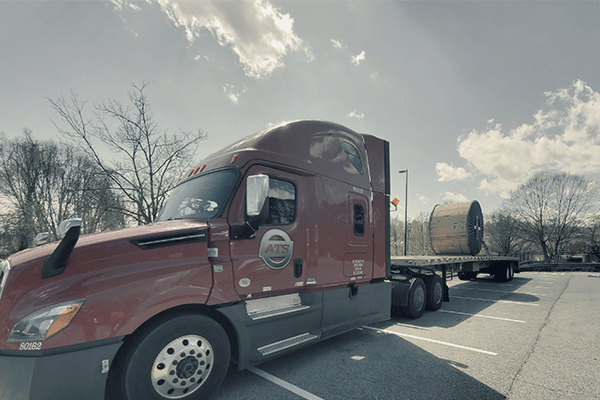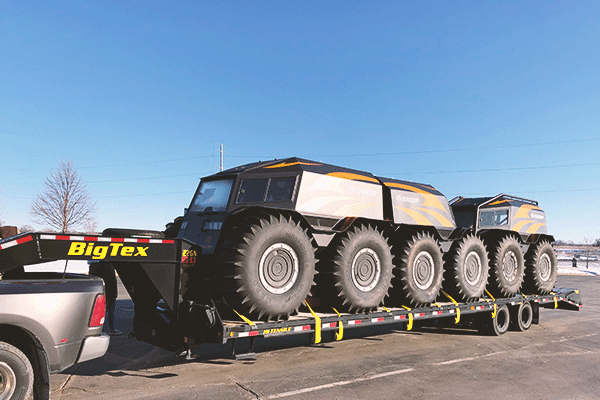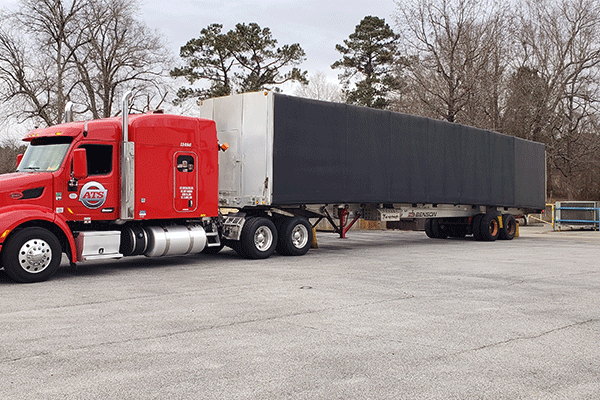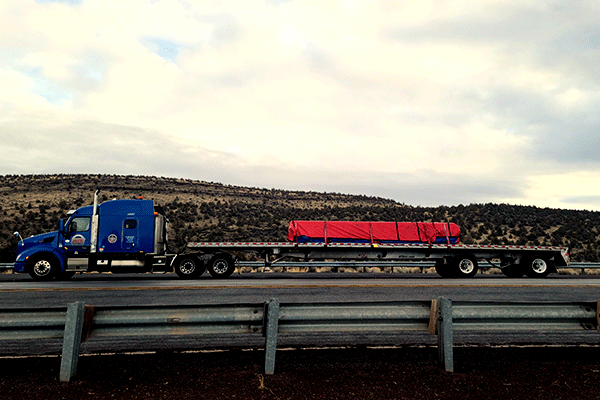The trucking industry is home to an extensive host of trailer types. From step-deck to lowboy trailers — designed to haul height-sensitive freight — to dry van and reefers commonly used to move food and beverage items. If you have freight to move, it’s likely that the trucking industry has the perfect trailer for you.
That said, not every trailer, of every type, is created equally. And, as you spend more time moving your goods, you’ll notice how many variances — from one trailer to the next — there truly are.
It’s important that you understand these differences and all of the options available to you. Doing so will help you make the most of your transportation dollars as you leverage all the information available.
Without fully grasping the intricacies of the transportation world, shippers are left at a disadvantage compared to their competitors that do. But that won’t be you. Not this time.
In the interest of outpacing your competition — as a shipper who utilizes flatbed trailers frequently — you’re looking to expand your knowledge base.
Today, we’ll do just that.
Here at ATS, our history moving flatbed freight — a history that spans more than 65 years — speaks for itself. We’ve seen these trailers develop and change over time into the well-rounded category of trailers available today.
Although the most frequently used “flatbed” trailers are traditional flatbeds, in this article, we’ll talk about some other members of the flatbed family as well — trailers that might also fit your needs.
Let’s discuss traditional flatbed trailers, some alternative options for moving flatbed freight and a few ways each of these trailers may differ from the next.
What is a Flatbed Trailer?
A flatbed trailer is a trailer with a flat deck, open sides and no roof. Flatbeds are a class of semi trailers used to transport all kinds of cargo from lumber and raw materials to finished products and even hazardous goods.
The main types of flatbed trailers used in to transport freight around the world are:
- Traditional flatbed trailers
- Extendable flatbed trailers
- Hot shot flatbed trailers
- Flatbed Conestoga trailers
- Maxi flatbed trailers (Super B trailers)
Together, these trailers handle the majority of flatbed loads around the U.S. each year.
Traditional Flatbed Trailers
These are trailers set the baseline for this entire article.
Traditional flatbed trailers are just that, flatbed trailers. And, although this article will continue by outlining some alternatives to these transportation staple pieces, the fact remains: traditional flatbeds are irreplaceable.

The two most common types of traditional flatbed trailers are the 48-foot and 53-foot versions.
No matter which length you utilize, the maximum legal cargo dimensional capacities of traditional flatbed trailers are:
Flatbed Trailer Dimensions
| Maximum Cargo Width | 8 feet, 6 inches (102 inches) |
| Maximum Cargo Height | 8 feet, 6 inches (102 inches) |
| Maximum Cargo Weight | 45,000-48,000 pounds (varies by trailer) |
| Maximum Cargo Length | 48-53 feet |
For decades, companies around the United States, and the world, have utilized these trailers to move their open deck freight.
That said, these trailers — free of frills and complexity — are only the very tip of the mountainous service offering that is “flatbed trailers”.
Let’s talk about a few more. . .
Extendable Flatbed Trailers
Also called stretch trailers, many trucking companies find owning a few extendable flatbeds to be a cost-effective alternative to maintaining a larger fleet of various-sized traditional flatbeds.
Designed to haul flatbed freight of lengths that exceed the 48 and 53-foot thresholds of traditional flatbeds, stretch trailers are an exciting variation to an otherwise dull trailer type category.
Where dimensions are concerned, extendable flatbeds boast a maximum legal cargo width and height that mirrors that of their traditional counterpart at 8 feet, 6 inches respectively.
The main selling point of these trailers is the extendable rear portion which can be adjusted to various lengths ranging from 48 to 80 total feet (for 48-foot version) and from 53 to 90 total feet (for 53-foot version).
Although these trailers can be used to haul exceptionally long freight, the loads they move can’t be very heavy. And, depending on the state you’re moving through, stretch trailers aren’t legally capable of hauling anything weighing more than 43,000 pounds without permitting.
As such, you should only consider an extendable flatbed when hauling overly-long, yet not-so-heavy, flatbed freight — such as I-beams or lumber.
Hot Shot Flatbed Trailers

One common alternative to traditional flatbeds are the trailers utilized for hot shot trucking. As class 3-6 pickup trucks have continued to develop, hot-shotting freight has become increasingly common over the past few decades.
The trailers used for this service are similar to traditional flatbeds in that they’re simple and versatile. For the loads that fit their capabilities, hot shot trailers are a competent, cost-effective, option.
Although hot shot trailers come in a few varieties — each designed with specific freight in mind — the most common versions are:
- Gooseneck hotshot trailers
- Dovetail hotshot trailers
- Bumper-pull trailers
For smaller freight — that simply wouldn’t be feasible to haul on a flatbed trailer — the dimensional capacities of flatbed hot shot trailers, which range between 30 and 40 feet long, fits these loads nicely.
Flatbed Hot Shot Trailer Dimensions
| Maximum Cargo Width | 8 feet, 6 inches (102 inches) |
| Maximum Cargo Height | 10 feet |
| Maximum Cargo Weight | 16,500 pounds |
| Maximum Cargo Length | 30-40 feet |
In an industry where less-than-truckload (LTL) quantities of freight would otherwise share a flatbed’s trailer space, hot shot trucking provides another option.
Instead of dealing with the transit timing and load-tracking issues that commonly stem from sending freight LTL, using hotshot services— the smallest member of the flatbed trailer family — gives your freight a dedicated truck, trailer and driver.
Flatbed Conestoga Trailers
If you’re the type of shipper that’s consistently looking to protect your freight from the elements during transport, look no further than this fourth type of flatbed trailer.
Conestogas are a class of trailers that have a neatly carved niche among companies who need their products — which can dimensionally fit on a flatbed trailer — protected from external conditions during transit.
Sure, these requirements can be met by tarping a load on a flatbed trailer but Conestogas are more fun. Not only that but utilizing a Conestoga is a great solution for loads that make tarping more difficult; where doing so could damage the cargo or tarps.
In a nutshell, Conestoga trailers are made up of two core parts; a 53 or 48-foot flatbed trailer and a retractable curtain system, creating a barrier of protection for all goods inside.
As well as flatbed, Conestogas are available in more specialized trailer types like step-deck and double drop. For our purposes, though, let’s look at the maximum legal cargo dimensions of a flatbed Conestoga:
| Maximum Cargo Width | 8 Feet, 4 Inches (100 inches) |
| Maximum Cargo Height | 8 Feet (96 inches) |
| Maximum Cargo Weight | 44,000 Pounds |
The tarping system that lines the decks of these trailers makes it impossible for Conestogas to move over-dimensional freight of any kind. As such, make sure to consult your transportation provider about whether a Conestoga will be a capable solution for your needs.

Maxi Flatbed Trailers (Super B Trailers)
Maxi flatbeds are essentially two separate trailers pulled one behind the other with a total length ranging between 53 to 65 feet. This type of trailer is a bit less common.
Typically, the lead trailer — positioned first — is longer than the back or “pup” trailer which is connected to the first by a secondary kingpin. Together, these flatbeds have a maximum legal height and width of 8 feet, 6 inches and — due to the additional axle count of both trailers — can haul up to 96,000 pounds of freight.
Although “Maxi” trailers are extremely specialized, they may be worth considering should your freight have longer, heavier, dimensions.
How Do Flatbed Trailers Differ in Construction?
Now that you have a better understanding of the many flatbed trailers available for your use, let’s talk about how the way they’re constructed may change from one to the next.
You see, the companies that manufacture these trailers don’t always do so the same way. In fact, you’d be surprised at all of the different ways a flatbed trailer can be constructed.
Let’s talk about a few of them. . .
Tandem-Axle Flatbed Trailers
Some flatbed trailers you’ll come across will have their axles positioned in different ways. And, even though the total legal gross weight of a trailer, tractor and load must be less than, or equal to, 80,000 pounds, the positioning of a flatbed’s axles matters greatly to the way they’re loaded.
Many flatbed trailers have what are called “tandem-axles” where the trailer’s axles are positioned one after another near the rear of the deck.
Tandem-axle flatbed trailers can typically support up to 34,000 pounds on these rear axles making it easy to comfortably load 45,000 pounds across their decks.
Spread-Axle Flatbed Trailers
Spread-axle trailers are another iteration you’ll find in the flatbed trailer family. These spread axles can support no more than 20,000 pounds each (40,000 pounds total). As such, paying attention to your weight distribution when loading a spread-axle flatbed is important.
Typically, these axles are distanced no more than a few feet apart. That said, larger flatbeds may have more than 10 feet of spacing between axles.
Sliding-Axle Flatbed Trailers
Sometimes, the axles on flatbed trailers can be moved along their length to meet the weight distribution requirements of the load they’re supporting. Sliding-axle trailers are commonly seen on dual-axle semi-trailers and help support the heft of larger freight by shortening the distance between the “drive” and “rear” axles.
Tri-Axle Flatbed Trailers
These are some of the larger flatbed trailers. You see, tri-axle flatbeds are designed to haul bulkier, flatbed freight.
With a third axle near the rear that can be mounted (locked into place above the ground without bearing weight or functioning) if need be, these flatbeds can haul more weight than their dual-axle counterparts — usually around 65,000 pounds.
This added weight capacity makes tri-axle flatbeds an ideal equipment type for moving heavier freight that falls beneath their 8 foot, 6-inch ceiling.
Leaf-Spring vs. Air-Ride Suspension Flatbed Trailers
Based on the construction of each flatbed trailer, the suspension used to facilitate relative motion between its loaded deck and wheels will either be air or spring-based.
Flatbeds with air-ride suspension use a system of air valves and bags, coupled with compression, to raise a trailer from its axles. In recent years, air-ride suspension systems have become increasingly common as old flatbed trailers are replaced with newer versions.
Additionally, air-ride suspension makes it easier to protect sensitive cargo from damage that could be caused by jostling and bumping in transit.
That said, there are still plenty of flatbeds that employ leaf-spring suspension systems. Leaf-spring suspension is accomplished by creating a unit of elliptical leaf springs and a pack of steel strips to blunt the impact of bumps and shifts during transit.
Generally, leaf-spring suspension is less expensive to manufacture and easier to employ than air ride technologies — which require a power source to utilize. As such, hot shot flatbed trailers commonly use leaf-sping suspension to hoist their loads.
Aluminum vs Steel Flatbed Trailers
The materials used for the construction of each flatbed is another way they vary. Whether a flatbed is made from steel or aluminum depends on the manufacturer and the intended purpose of each trailer.
It’s important to note that the total amount of cargo weight your flatbed can carry depends on the materials used in its creation.
Aluminum flatbed trailers, for example, boast a higher weight-to-strength ratio than steel trailers.
What this means is that aluminum flatbeds typically weigh less than steel flatbeds which gives them a bit more wiggle room on their way to a fully-loaded 80,000-pound truck trailer and load combo.
That said, steel flatbeds are sturdier than aluminum ones, making them less likely to bend or break over time. When the capacity you need comes down to a few thousand pounds for a maxed-out load, the type of material your flatbed is made out of matters.
As such, make sure to consult your trucking company about whether their flatbeds are made from steel or aluminum. Depending on their answer you may want to work out a way to cut down the total weight of your load.
Which Trailer is Best For Your Needs?
Ok.
Now that you have the run-down on the most common members of the flatbed trailer family and a better understanding of the way the construction of these trailers may differ, you’re a bit closer to becoming a master of your supply chain.
To do this though will take more of an investment. Luckily, your next step is simple; figure out which trailer types best fit your needs.
Making the most of your supply chain and budget usually comes down to how flexible you are with your trailer-type requirements.
Many times a flatbed trailer isn’t the only equipment type that will fit your needs. But with so many options out there it can be difficult to understand the capabilities and use-cases associated with each.
To help you make the best decision for your business and add some flexibility to your requirements, we’ve compiled a list of the most common trailer type options out there. And, we’ve even compared the pros and cons of a few.
Check out these pieces of content for a bit more information on which trailer truly suits your situation.


